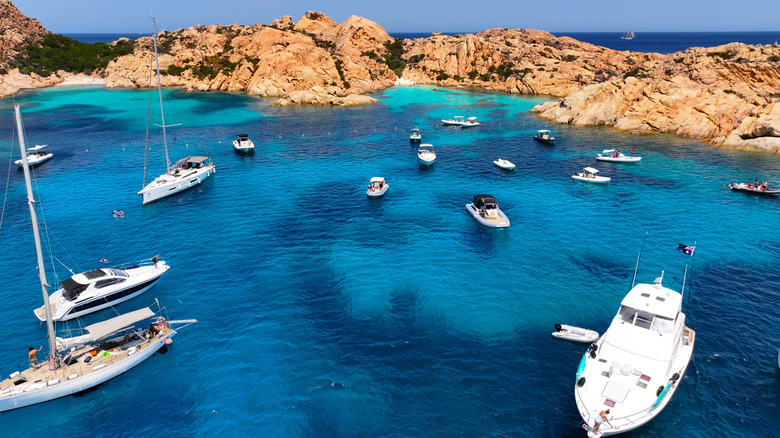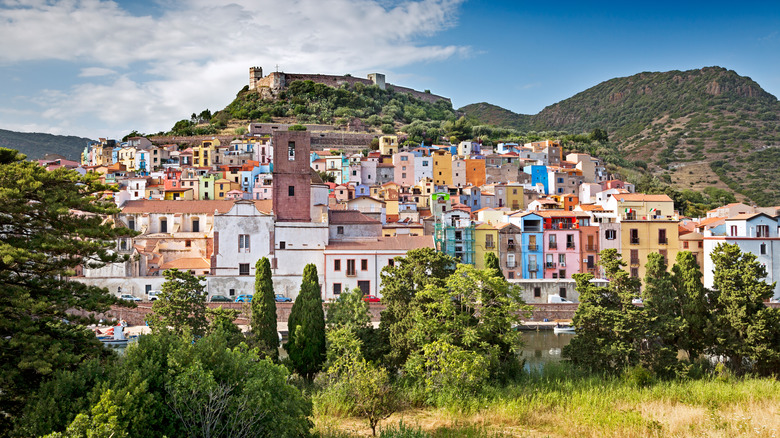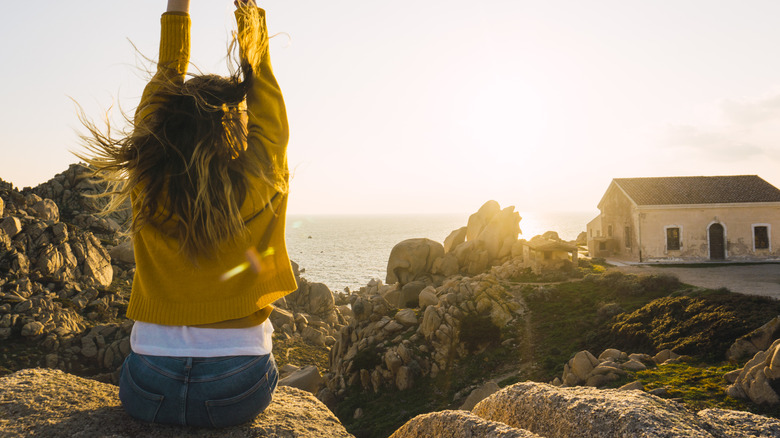This European Tourist Hotspot Will Be Easily Accessible From NYC With A Non-Stop Flight
The Mediterranean is home to some of the most famous islands in the world. Each have their claim to fame. Corsica was Napoleon's birthplace. Rhodes had its Colossus. Malta was a Crusader stronghold. Crete had a Bronze Age civilization that predated the Greeks. For thousands of years, the seas between Europe and Africa have roiled with activity. Visitors usually know one or two basic things about them, and when they arrive, they learn so much more. Just the names Mallorca and Cyprus conjure images of beaches, turquoise waters, gold-colored cliffs and grilled seafood.
But for Americans, Sardinia is a late bloomer. This Italian island isn't small — the population is about 1.6 million — yet few U.S. travelers could place it on a map, much less know anything about it. There's no go-to historic event, cultural hallmark, or standard souvenir that Americans think of, and most would be excited to recall that it's an island. Sardinia doesn't make U.S. headlines. While millions of Americans claim heritage from Sicily, another large Mediterranean island governed by Italy, Sardinians never left such a memorable legacy at Ellis Island.
This is starting to change. In 2024, 4.5 million travelers visited Sardinia, a massive 15% increase over the previous year. More people are discovering this Mediterranean island is a must-visit for thrilling outdoor adventures, and the Sardinian tourism industry raked in $1.7 billion. While the vast majority of these guests are European, the reputation has spread to the United States: Delta Airlines will start servicing direct flights from New York City to Sardinia in 2026.
Reasons to visit Sardinia
For starters, Sardinia is ringed with beaches and rocky coasts, and for legions of tourists, that should be enough. The moment people hear about bleached cliffs and clear waters, they'll start planning their vacations, especially if there's a direct flight to get there. This comes with all the usual Mediterranean perks, like sunbathing, snorkeling, charter boats, fishing expeditions, and dive sites. The local government asks you not to take this beautiful but forbidden keepsake from Sardinia's beaches. Sardinian restaurants are a cornucopia of fresh seafood and pasta, and a bedrock of the local economy has always been herding, so visitors also prize Sardinian mutton. Some are surprised to find wineries among local hills; this island has a thriving viticultural scene.
Dig a little deeper, and you'll find Sardinia's rich history. Humans have settled there since Neolithic times, and Roman, Carthaginian, and Arab fortune-seekers all left their mark on the island. Sardinia became an Italian territory in 1861, yet the culture remains in many ways distinct. Many Sardinians speak their own language, Sardo, which is widely considered the closest modern equivalent to ancient Latin. The land is littered with archaeological sites, including Monte d'Accoddi, a 6,000-year-old "ziggurat" with a mysterious, egg-shaped shoulder in front. The society that built the "Pyramid of Sardinia" is so old that scholars don't even have a name for it.
Sardinia may not seem very big when viewed on a digital map of Europe, but a drive from the northern to southern coasts will take over three hours. This drive is worth your while, too; the topography is made up of granite hills and mountains, which are checkered with grass, trees, and rock faces. The pictures practically take themselves.
How Delta will fly you to Sardinia
The direct flights from John F. Kennedy Airport in New York will start taking off in March 2026, giving winter-bound Northeasterners something to look forward to. U.S. travelers will touch down in Cagliari Elmas Airport, just outside the island's capital city of Cagliari in the far south. The millennium-old city is famed for its coastal views, pastel-colored buildings, and historic attractions, such as the inimitable carven tombs of the Tuvixeddu Necropolis. The new flight path will inevitably lead to a surge in tourism, so travelers in March will get to explore the country before it's potentially overrun.
Most visitors get around Sardinia by car, although scooters and bicycles are handy for localized travel. You'll find a wide range of hotels, from backpacker hostels to seaside resorts, which tend to skew expensive; expect to pay $100-200 per night for a room. Once you're there, you'll have no trouble filling your days with organized activities, such as catamaran charters and e-bike tours. A favorite pastime is to walk around the photogenic streets or spending hours lying in the sand. Small wonder Sardinia is among the underrated places in the Mediterranean to add to your bucket list, according to travelers.


